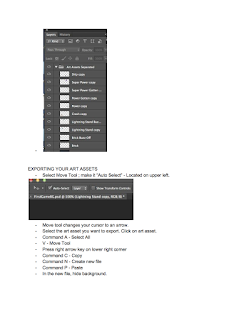Saturday, April 30, 2016
Tuesday, April 26, 2016
Wednesday, April 20, 2016
Wednesday, April 6, 2016
Course Description
DESIGN FOR ANIMATION AND GAMES
Instructor: Alejandro Leon
AlejandroLeonArt.com
Course Description
This class is an introduction to design for the animation and video game industry. Students learn basic drawing and design skills used to create characters and environments for animation and/or games. The class is designed around two projects meant to mimick real world projects. Instruction is given through short lectures, exercises, and instructor feedback of work done in class.
Materials
Xerox Paper (11x17)
Prismacolor Col-erase pencils - Venetian Red, Black
Kneaded Eraser
White Artist Tape
Staedtler Stick Eraser
USB Drive
Tracing Paper (Same Size 11x17 or similar)
(Optional for Digital) - Intuos 3 Wacom Tablet or above; used are less expensive and as good.
Goals
Animation
- Design 3 - 5 characters based on an existing story.
- Design 1 background for the story
Games
- Design 3 - 5 characters based on an existing game or genre.
- Design costume, armor, and weapons for characters.
- Design one background
Projects
There are two projects for the 8 week class. The first project will be character design and will end on Thursday of Week 6. The second project will be to design a background/environment and the is due on the last day of class.
Character Project
CHARACTER PROJECT
Summary
Design 5 characters based on an existing story. The story can come from classic literature like Edgar Allen Poe or from more recent books like Harry Potter. It should be a story that you are familiar with. To make the design process more interesting, you will change the location and/or period where the story takes place. For example, the story of James and the Giant Peach in the steam punk Victorian era.
Character design is an iterative process. You will be creating a lot of different designs and re-designs for each character. It is this process that helps you to come up with new and fresh ideas. Your first designs will not be your best so it is important that you try to push yourself and push through to the better ideas. Have fun and feel free to try new things.
If you are more interested in games, you can choose to design 5 characters that exist in an existing game. Of the five, at least 2 characters must be playable characters. The rest can be creatures or boss characters. You will still need to change the location and/or period.
Due Date: Thursday Week 5
STEP 1: KNOW THY CHARACTERS
Choose an existing story that you are familiar with. You will be creating designs for 5 characters in the story. Pick a story that you are excited about. For each character, write down a list of traits that describe the character.
What is the personality of that character?
What are his motivations?
Name an actor who could play that character?
Describe the character using 5 adjectives
Describe the character using 5 nouns.
STEP 2: LOCATION AND PERIOD
Choose a location and a period where the story takes place.
Examples of Locations:
Prague, San Diego, London, a small Spanish village, Ireland, Congo, Amazon rainforest…
Exampls of Periods
Caveman era, 19th c France, Edo Period in Japan, American Revolution...
STEP 3: GATHER REFERENCES
You will need to gather two sets of references. One set of references is the art style and the other set is real life images. You will often refer back to your references when you start designing. The references provide inspiration and guidance when you design. It helps you to understand the fashion and style of that particular period.
Examples of Art Styles
Feature Animation - Nico Marlet, Chris Sasaki, Shiyoon Kim, Frank and Ollie, Milt Kahl
TV Animation - Amazing World of Gumball, Lou Romano, Steven Silver
Children’s Books - John Klassen, Arree Chung
Anime - Miyazaki, Durarara, Samurai Champloon, Cowboy Bepob, Fate Stay Night
Cartoony Games - Little Big Planet, Ratchet and Klank, Mario Bros., Team Fortress
Realistic Games - Kevin Chen, Charlie Wen, Ryan Meinerding, Red Dead Redemption
Outside of Animation
Sean Chao, Souther Salazar, Rob Sato, Ako Casteura, Jonas Wood, Amy Sillman,
STEP 4: RESEARCH DRAWINGS
Just because you see it doesn’t mean you know how to draw it. You know how to draw it when you’ve drawn it. Do drawing studies of the references that you will be using. For example, if there is a particular jacket that will work well for your character, do a study of the jacket. Drawing the jacket will help you become more familiar with the details that specific jacket. Which helps you to draw that jacket. It’s all in the details.
STEP 5: BECOME THE CHARACTER AND VIDEO TAPE IT
Act out the character talking with his friend. Act out the character standing and waiting in line or at a photo shoot. This will help you figure out the gesture of the character when you start designing. Use Photobooth on your mac to do this.
STEP 6: START DESIGNING
Have your references on your screen when you are designing the characters. Use the lighter col-erase pencil to make your initial lines. The lines should be loose and free. You can tighten up the drawing later with the darker pencil, but not at this stage.
STEP 7: RE-DESIGN AND PLUS-ING
This is the meat and potatoes of the whole class. You will be redrawing and redesigning the characters you have created until it is amazing! This is where most of the learning takes place and the little nuances that make something good to great are discussed and demonstrated. I will be providing feedback on your characters. It is the student’s responsibilities to apply the feedback and continue to improve upon their design.
Monday, April 4, 2016
Subscribe to:
Posts (Atom)


















